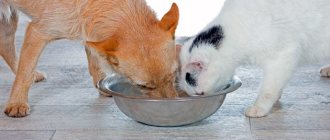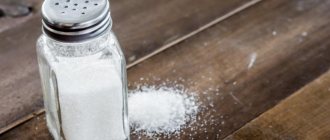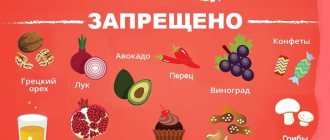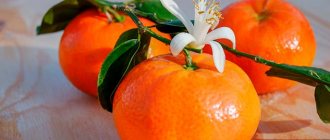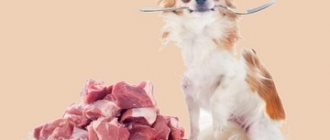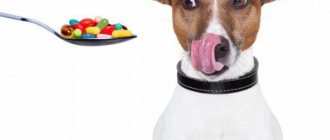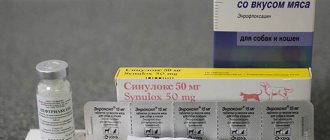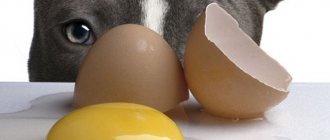Many dog owners feed their pets the same food they eat themselves. If you have buckwheat porridge with meat for dinner, it means it’s on everyone’s plates, including the dog.
And to make the dish more filling, you can also crumble some bread into it, or simply give a piece of loaf as a snack. And it’s hard to refuse when they look at you with such pitiful eyes from under the table!
Let's find out if dogs can be given bread? After all, this is a rather controversial product that is not always useful even for people.
Benefits for humans
Bread is the head of everything! Yes this is true. It helps you get full faster, makes your diet more satisfying and tasty, and it was bread that saved our grandparents from hunger during the war. But it turns out that not all bread is healthy .
Let's figure out why:
- it contains yeast - they do not die during heat treatment and continue to live, but in our body, inhibiting the beneficial intestinal microflora;
- it contains refined flour , purified of everything useful - this is ballast for our body, which causes excess weight gain;
- Sugar and are often added to the dough , which make it even more harmful.
Of course, there is always a healthier alternative - yeast-free sourdough bread , without harmful additives. It is tasty, healthy, but more expensive than a regular wheat loaf.
Another option, the healthiest: homemade bread , made either from whole grains or from rye flour with grown sourdough.
You can eat this bread on both cheeks and not worry about your health.
Feeding newborn puppies
Proper care and proper feeding from birth are the key to the health and longevity of your Yorkie. The amount of milk a mother has depends on the quality of her contents, but, to a greater extent, on heredity. It has been experimentally proven that a female is capable of feeding only six puppies well. The rest will have to be fed. When to start feeding puppies? You need to pay attention to their behavior. Well-fed babies are relaxed and sleep most of the day, while hungry babies constantly squeak and crawl around their mother.
The first complementary food should have a similar composition to Yorkie milk. It is best to buy a special mixture produced by dog food manufacturers. Or modernize cow's milk: add raw yolks (one per 100 ml) and weakly brewed tea. Heat the mixture to 28˚C and feed through the nipple. Puppies should be fed 2 times a day after they have taken their mother's milk. Gradually, porridge from soaked food (the same as what the female ate) is introduced into the diet, into which a raw quail egg is mixed. One serving is for all children.
If for some reason the mother does not feed the newborn puppies, they will need to be given a dog milk replacer every two hours. If the female was unable to feed them colostrum during the first 24 hours, the babies will most likely die.
Another mixture option:
- goat or cow's milk;
- one yolk;
- cream;
- 40% glucose;
- oil solutions of vitamins A and D.
Before serving, heat to 30-35C.
How to feed puppies according to age:
- At 1 month you need to feed the puppy a mixture of cow's milk, eggs and raw scraped meat (5-7 g of eggs and meat per puppy). Also start accustoming him to boiled vegetables and fruits. A one-month-old puppy should be fed often, but little by little. This will help you avoid overeating.
- At 2 months, puppies are fed 5-6 times a day. Volume: 1 tbsp. l. by 0.5 kg of weight. The diet includes fermented milk products, boiled meat, buckwheat and rice. Ratio: 2 parts meat, one part cereal.
- At 3 months, baked or stewed vegetables (carrots, zucchini, tomatoes) are added to the menu. 2 times a week - boiled or baked hake. Cottage cheese and kefir - daily.
Accustoming to vegetables begins with a volume of 0.5 tsp.
During this period, puppies eat 4-5 times a day. At 4 months, a feeding schedule is drawn up, puppies receive food 4 times a day. From 6 months, babies are transferred to three meals a day.
Do animals eat it?
Bread is carbohydrates that both dogs and humans absolutely need. But if your pet often eats cereals (these are also carbohydrates), then it is better to exclude bread from his diet , since an excess of carbohydrate foods will lead to obesity of the animal and provoke the occurrence of heart and joint diseases.
Another important point is not in favor of baked goods (including pasta, pancakes, pancakes, etc.): they turn into ordinary flour paste, which disrupts the functioning of the digestive system and worsens the pet’s well-being.
Attention! It is better to replace bread and sweet rolls with crackers. They can be used as a reward, and due to the fact that they are quite hard, crackers perfectly clean the dog’s teeth and even remove tartar.
Features of dog digestion
Before you figure out whether you can give your dog bread, you should study a little theory.
The fact is that the wild relatives of dogs, for example, wolves, are completely unable to digest such carbohydrates, for example, a roll, potatoes, pasta or any baked goods - they clog the stomach.
However, over thousands of years of living side by side with humans, the dog has changed. Digestion adapted to new types of food, and man's best friend began to digest the new dish without any problems.
Fact !
Historians, examining the remains of dogs, determine whether it was tame precisely by the DNA sections responsible for the production of the enzyme that allows the digestion of baked goods.
Contraindications and allergies
One of the most common allergies in dogs is food. It can manifest itself with different symptoms: the animal’s paws swell, it sneezes and coughs, redness appears on the code, eyes turn red, etc. The allergy will definitely not go unnoticed. The main thing is not to ignore the symptoms and determine what exactly triggered it.
Bread can cause allergies in dogs, as it contains various additives that not only provoke allergies, but are also toxic. Also, allergies can be caused by a product with an unusual composition , for example, bread made from corn or soy flour.
Dog breeds with light fur are especially susceptible to food allergies:
- bulldog;
- Cocker Spaniel;
- boxer;
- Dalmantine;
- Irish Setter;
- terriers;
- Labrador Retriever;
- miniature schnauzer;
- miniature schnauzer.
Content
1. If you can give a dog bread, what is its benefit? 2. Undesirable factors 3. Optimal compromise 4. Feeding tips
Bread, as a food product, has actively and firmly entered our daily lives, and in many cases, has taken a leading position. However, have you personally wondered whether it is possible to give bread to a dog, and how safe and advisable it is? We know very well that not all products from our daily or holiday table are relevant for pets. Let's consider this issue from the point of view of professionals: dog handlers, veterinarians, breeders.
How often and in what quantities is it possible?
Everything has its own measure: the less bread you give your four-legged friend, the better for him. But if he really asks or deserves it by following commands well, you can pamper him a little and give him 1 piece of bread or cracker (depending on the size of the breed).
How to feed?
If you use bread as a reward treat, do it right:
- white bread under any circumstances - it is difficult to digest;
- do not include bread in your daily diet;
- do not feed fresh crumb - the yeast will begin to ferment in the stomach and cause colic;
- do not serve too soft baked goods - they immediately turn into paste in the stomach;
- do not indulge your pet with sweet pastries (even sweet crackers are harmful);
- moldy product - in the trash, but not in the pet’s mouth;
- Make sure your dog doesn't accidentally eat raw dough - it's deadly for him.
For puppies
The puppy moves a lot, is actively growing and needs an increased amount of carbohydrates. Therefore, puppies can be given some bread, but attention (!) only rye bread and preferably soaked in low-fat broth . White bread can only be given in the form of crackers, as it is very difficult to digest.
REFERENCE! It is better if instead of bread the puppy receives vitamin flour.
You can prepare it yourself.
To do this, you will need unrefined wheat or oat grains : they need to be sprouted and then ground into a homogeneous mass. This flour is well digestible, saturates the body with vitamins and stimulates the digestive tract.
Pregnant or breastfeeding
The main food for a pregnant and lactating bitch is meat soup with cereals, herbs and vegetables. You can also include fish, fish oil, bone meal, and dairy products in your diet, but it is better to avoid bread altogether . Baking is allowed in small quantities and only from rye flour.
IMPORTANT! Before giving store-bought bread to a pregnant or nursing dog, re-read the ingredients. If the product contains synthetic additives, do not give it under any circumstances.
Tips for owners: how to give bread so as not to harm
When using bread as a treat for your four-legged friend, you need to adhere to the following recommendations:
- do not give baked goods daily;
- you can’t feed the crumb: the yeast begins to ferment, causing colic;
Excessively soft baking is prohibited: it instantly turns into paste;- you should not give baked goods or even sweet crackers;
- moldy bread and fresh dough are strictly prohibited;
- You should not give flour to obese or aging dogs.
Different types
White
Fresh white bread is especially harmful to dogs. It is harmful to humans, and even more so to animals. This product is made from purified refined flour with the addition of dry pressed yeast, and is also supplemented with various additives. There is no benefit from such a product.
Black
The most harmless bread for dogs is made from rye flour. But again: not fresh, but better in the form of dried crackers . This product can be fed to stray dogs that need carbohydrates, and to pets as a reward treat.
REFERENCE! Rye bread contains lysine, an amino acid that strengthens the immune system and improves heart function.
Bread
Just like crackers, you can give your dog bread. But not the usual ones sold in the store (they usually contain brewer’s yeast and various additives), but better homemade ones.
You can make these breads yourself using regular rye flour and water:
- mix flour with water until smooth without lumps;
- apply the mixture in a thin layer onto a sheet of parchment paper greased with oil;
- bake in the oven for about 10-30 minutes.
The finished breads are healthy, crispy and aromatic . They can be given to your pet as a treat in moderate doses. But always remember that this is still flour and you shouldn’t get carried away with it.
Other dough products
We have sorted out the bread: fresh is not allowed, white is not allowed, only rye or whole grain, in stale form or better in the form of crackers/bread. But what about other baked goods? With buns, pasta, dumplings, dumplings, pies, cookies and other delicious things that we humans love so much?
It's simple: don't give it. The digestive system of dogs is not designed to fully absorb glucose, so sweets cause fermentation, constipation and bloating. In addition, sweet baked goods negatively affect the dog’s vision and hearing: the eyes may begin to water and the dog’s hearing may become weak.
Healthy! If you really want to give your pet something sweet, let it be fruit or special products. Now you can easily buy a healthy dog cake made from offal, vegetables, cereals, cottage cheese and other safe products.
Rusks and dried products
The safest option for a dog is crackers. But not the ones sold in the store (they are usually dried from old sweet rolls), but homemade ones. They can easily be dried in an oven or a special dryer.
Sweet crackers can cause tooth decay. Therefore, use crackers from regular bread as a treat.
Useful varieties
Not all types of bread are harmful to your pet. Some of them can have a positive effect on the body.
Avoiding white bread
White bread is bad for dogs. In the process of its production, purified refined flour, pressed dry yeast and a number of additional additives are used. This product does not provide any benefit.
Black and bran types: more benefit than harm
The most harmless varieties are black and bran bread. Such options can be given to a four-legged friend as an incentive treat.
The best choice: crackers and biscuits
Crackers are the easiest to digest. It is recommended not to purchase them in the store, but to dry them in the oven. Breads are also suitable. The main thing is to give this treat to the animal in small quantities.
What to do if your pet is full?
Even if the owner is responsible and feeds the pet the right food, trouble can still happen. For example, the dog himself can steal a loaf of bread and eat it, or even worse: cookies, chocolate, cake.
There are different stories on the forums: “While I was not at home, he caused chaos in the kitchen, devoured a loaf of bread, and a pack of chocolate chip cookies, plus some dry rolled oats and possibly tea!”
Veterinarians advise not to panic in such situations , monitor the pet’s condition and give him plenty of water . If he starts having hiccups, vomiting, bloating, constipation and other symptoms of indigestion or even poisoning, give 1-2 tbsp. Enterosgel. This drug works better than activated charcoal and cleanses the intestines well of toxins.
Either laxatives or vegetable oil . If the case is advanced, you can use a water enema.
What to replace it with?
You can replace bread in your dog’s diet with unsweetened crackers, crispbread and unleavened biscuits. Such products do not harm the animal’s digestive tract and are digested normally, but do not forget - these are still carbohydrates, and their excess can cause excess weight and various diseases .
Many owners give bread to dogs to make them feel full faster. Instead of such a “filler,” use special flour made from sprouted grains: it can be safely added to food.
During pregnancy
A pregnant dog needs to be fed 5 times a day. The best option in this case is specialized dry food, the composition of which is enriched with necessary substances. If the female eats natural food, then the basis of her diet should be meat, dairy products and vegetables. During this period, she needs vitamin supplements, the dosage of which is calculated by the veterinarian. After birth, the dog is fed in the same way as during pregnancy. The main thing is to make sure that the composition contains 24-28% protein, as well as a high content of nutrients.
The health and longevity of Yorkshire Terriers depend on regular and high-quality nutrition. If owners decide to feed their pets home-cooked food, they should select ingredients with great care. The same applies to factory production: super premium class holistic dogs are suitable for Yorkies.
